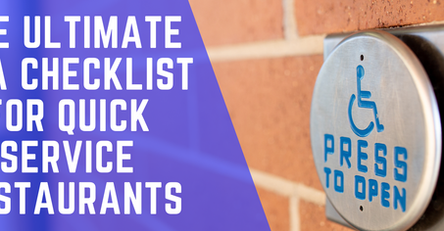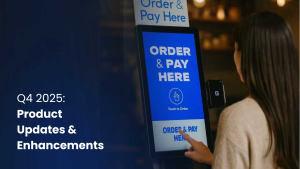Are Restaurant Kiosk Costs Worth the Investment? 2 Ways To Decide

Since the coronavirus pandemic began in 2020, inflation has been at an all-time high and companies across all industries are struggling to find and maintain a labor force. As restaurants across the country grapple with rising costs and labor shortages, many are turning to new and innovative solutions in order to stay up and running.
Self-ordering kiosks, which let customers order their food directly via touch screen, are one way that restaurants are overcoming these challenges. These self-serving kiosks have gained popularity rapidly over the last few years. In 2019 alone, sales of self-service kiosks rose 17.9%. In the current economic climate, we can only expect the popularity of restaurant kiosk solutions to continue climbing.
However, adding self-service kiosks to your restaurant’s ordering process does require some significant upfront investments. Let’s take a look at two ways to determine whether or not an interactive kiosk is worth the investment.
What Are Restaurant Kiosks?
Before we dive into the cost of installing self-service technology at your restaurant, it’s first important to define how self-service kiosks work and the various options you can choose from.
Self-service kiosks are point-of-sale (POS) devices that allow customers to place their own orders by choosing menu items from a touchscreen display. This eliminates the need for employees whose only responsibility is to take orders. Many restaurant kiosks also include add-ons, such as a barcode scanner for accepting coupons or an automatic receipt printer.
If you’ve been inside a McDonald’s lately, there’s a good chance you’ve already seen restaurant kiosks in action. McDonald’s was one of the first fast food chains to begin utilizing self-ordering kiosks, and many other fast casual restaurants have since followed suit. However, self-service kiosks aren’t just for quick service restaurants, and establishments ranging from food trucks to dine-in locations have begun turning to self-service ordering as a result of rising labor costs.
How Much Does a Restaurant Kiosk Cost?
In most cases, the cost of purchasing self-ordering kiosks is something that can quickly pay for itself many times over. Nevertheless, it’s still important to sit down and run the numbers in order to ensure that installing a kiosk at your establishment is actually a sound investment.
On average, the typical price range for a single restaurant kiosk is $1,500-$5,000 — more affordable than many business owners may assume. Countertop and table kiosks with a more limited range of features tend to fall on the lower end of this range, while larger floor kiosks, or custom kiosks with a wider range of features, fall on the higher end.
In addition to the upfront costs of purchasing a kiosk, you also need to factor in software expenses, extended warranties, and maintenance costs. Most kiosks come with basic software pre-installed, and in many cases that is all that you need.
Maintenance costs for restaurant kiosks are usually minimal, and can be further reduced by purchasing a high-quality kiosk from a reputable vendor.
How To Justify the Cost of a Restaurant Kiosk
In addition to reducing the number of employees required to operate your restaurant, installing self-service kiosks can also improve your bottom line. Kiosks can reduce customer wait times and help streamline your restaurant operations, enabling you to serve more customers in a day than you could normally accommodate.
When determining whether or not kiosk ordering is the right solution for your establishment, it is important to consider their cost-reducing benefits by calculating their impact on your overhead as well as the impact that kiosks can have on your future revenue.
Calculate Your Overhead Costs
Because using restaurant kiosks means that you no longer need dedicated staff purely for order-taking, this makes it easy to attribute a dollar amount to your cost savings:
For example, assuming that the average wage of one of these employees is $10 per hour, and that they work full time at 40 hours per week, it would cost $400 a week to pay a single employee to only take orders. Using that $400 as a baseline for the order-taking role, a kiosk could potentially pay for itself in a matter of weeks.
While this sounds like a great savings, there are other cost factors to consider:
- Restaurant kiosks run on electricity, and installing kiosks will marginally increase your energy bill
- The cost of shipping a kiosk to your location
- The cost of any additional software or add-ons that you wish to purchase for your kiosk
- Any maintenance expenses
To calculate the impact of a kiosk on your restaurant’s expenses on a more granular level, you’ll need to take these costs into account.
First, take the monthly operating costs of a kiosk (maintenance costs + energy costs) then subtract the monthly wage of the employee that your kiosk will replace. The result is your monthly savings.
You can also go a step further to determine how long it will take you to recover the total cost of your kiosk. Add up the up front costs of purchasing a kiosk (the cost of the kiosk itself, tax, shipping, and any add-ons you purchase). Divide your monthly savings by this number. This should give you an estimated number of months to recoup your kiosk-related expenses.
Project Your Future Revenue
In addition to reducing your expenses, self-ordering kiosks can boost your revenue as well. While some restaurant owners fear that asking customers to place their own orders will negatively impact the customer experience at their establishment, a study by the National Restaurant Association shows that 79% of restaurant customers say that a POS system is more convenient.
People gravitate towards convenience, so providing this option makes your restaurant more likely to attract repeat customers.
There is also evidence that kiosks result in a significant increase in transaction size, because customers are more likely to indulge if they’re not worried that an employee is judging them for their food choices.
Some other important questions to answer if you would like to project the impact of a kiosk on your future revenue include:
- How much of an impact will the kiosk have on your average ticket generation?
- Would installing a kiosk allow your staff to serve more customers by reducing your wait times?
- How much time spent managing employees will installing a kiosk save you?
- What impact will installing a kiosk have on your sales/marketing expenses?
- How much time/money will installing a kiosk save you on reporting?
By answering questions like the ones above, you can get a more accurate idea of a kiosk’s benefits for your establishment. This will help you weigh those benefits against the costs incurred, and help you decide whether or not you can justify investing in a kiosk.
Save on Overhead Costs With INFI Restaurant Kiosks
Restaurant kiosks allow restaurant owners to leverage the power of automation to cut costs and increase revenue in a way that improves customer satisfaction rather than hurting it.
At INFI, we are proud to partner with restaurant owners to provide them with high-quality kiosks that can improve their margins during these challenging times. If you would like to see the benefits of kiosk technology for yourself, we invite you to sign up for a free demo today.
About infikiosk
Related Posts
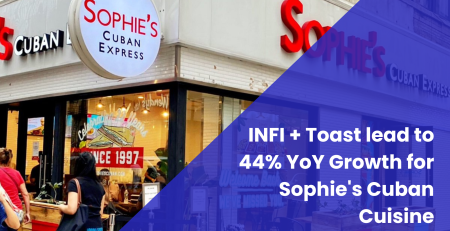
Case Study: Sophie’s Cuban Cuisine Drives Revenue Growth with Advanced Self-Order Kiosk Technology
Client: Sophie’s Cuban Cuisine Industry: Fast Casual Dining Locations: 11 Point of Sale: Toast Key Stakeholder: George J. Cestero, COO & IT/Digital Marketing Director...
6 QSR Trends That Are Changing the Restaurant Industry
Today, QSR establishments continue to see ongoing changes in response to social and technological developments. We’ve compiled six of the...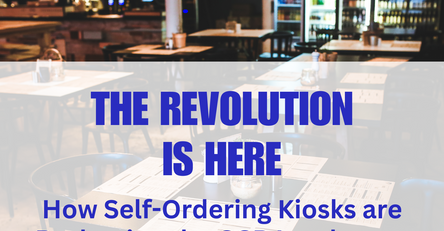
The Revolution is Here: How Self-Ordering Kiosks are Reshaping the QSR Landscape
One particular innovation has started to significantly reshape the QSR industry landscape—self-ordering kiosks.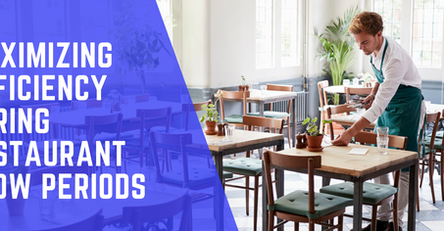
Maximizing Efficiency During Restaurant Slow Periods: A Digital Approach
This blog post explores how to navigate these slow periods effectively, focusing on digital investments and smart strategies to enhance...
Navigating the Future of QSRs: The Role of Kiosks and Technology
We went through these articles and skimmed through the almost 500 comments to get some insight on how people are...
How to Open a Pizza Place: Step-by-Step Guide & Tips
If you’re considering starting a pizza place, follow this comprehensive guide to ensure your success.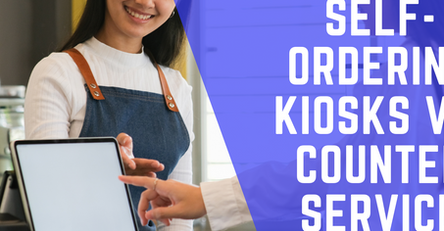
Comparing Self-Ordering Kiosks vs. Traditional Counter Service: Which Is Right for Your Restaurant?
This article delves into the pros and cons of self-ordering kiosks versus traditional counter service to help you determine which...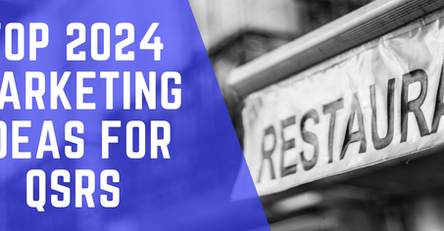
Top Marketing Ideas for Quick Service Restaurants (QSRs)
QSRs need to leverage creative approaches to boost brand visibility and drive sales. Here are some top marketing ideas...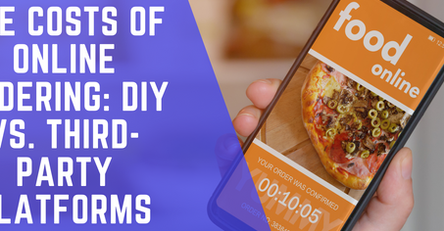
The True Costs of Online Ordering: DIY vs. Third-Party Platforms
As online ordering continues to reshape the restaurant industry, businesses face a crucial decision: build an in-house ordering system or...